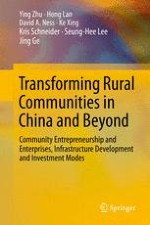2015 | OriginalPaper | Chapter
4. Carbon Trade, Forestry Land Rights, and Farmers’ Livelihood in Rural Communities in China
Authors : Ying Zhu, Hong Lan, David A. Ness, Ke Xing, Kris Schneider, Seung-Hee Lee, Jing Ge
Published in: Transforming Rural Communities in China and Beyond
Publisher: Springer International Publishing
Activate our intelligent search to find suitable subject content or patents.
Select sections of text to find matching patents with Artificial Intelligence. powered by
Select sections of text to find additional relevant content using AI-assisted search. powered by
